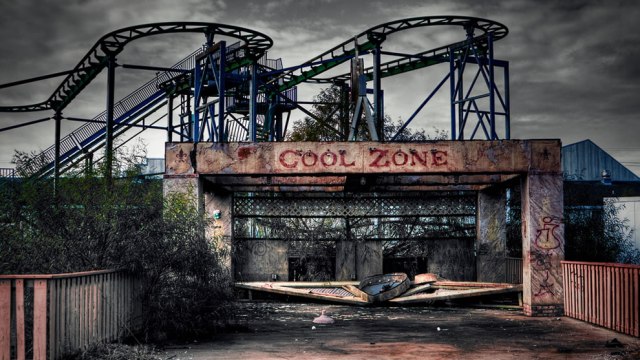Ask Ethan: Does Earth really have a second Moon?
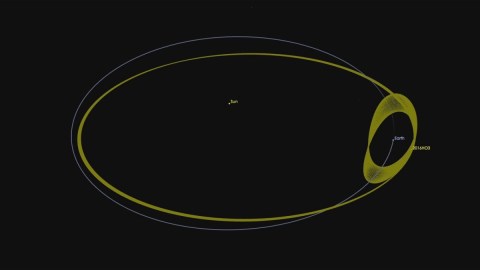
There’s a small rock orbiting our planet more distant than the Moon we know. Does that mean we have two Moons?
“You can be the Moon and still be jealous of the stars.” –Gary Allen
Since ancient times, humans have gazed at Earth’s moon and wondered about its origins, its place in the Universe and why it was our only one. After the discoveries of Jupiter, Saturn and many other worlds with multiple moons — including even our neighbor Mars , with more than one — it left us scratching our heads as to why Earth only has one. Yet even this assumption may turn out to be false, as recent reports declared that we have a second moon! Is this really true? Wayne Griffith wants to know:
I came across Asteroid 2016 HO3 online and I wonder if it is true?
It is true; we do have a small object orbiting in the vicinity of Earth, and a good enough skywatcher with the right equipment can find it for themselves!
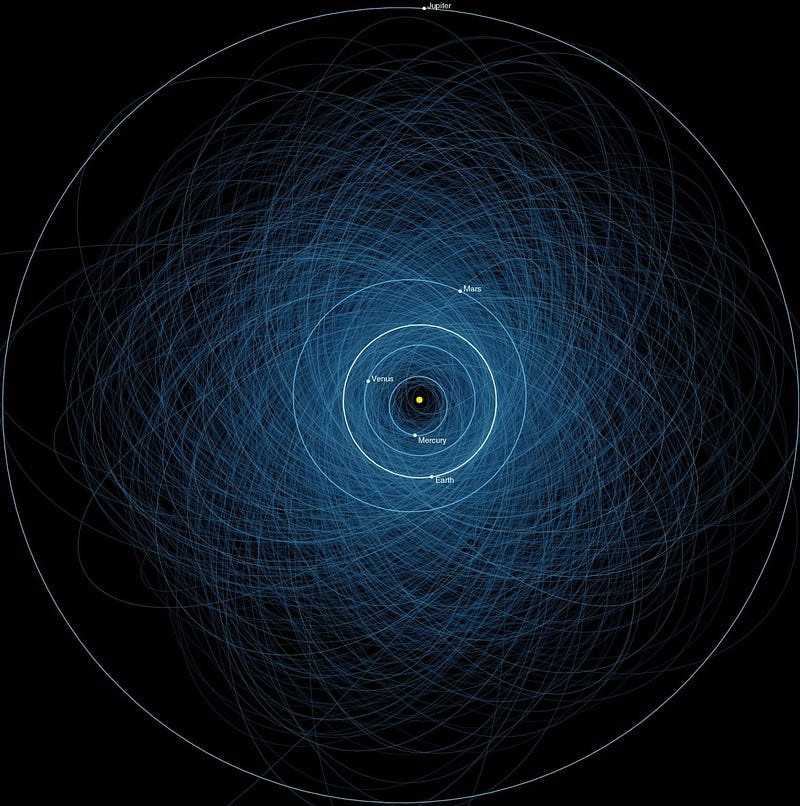
There are two different ways that a planet can have a natural satellite. The one you’re most familiar with — the path that the “old” Moon follows — occurs when an object is directly bound to its parent body. That means it has a certain speed and orbits at a certain distance from a planet to remain in direct orbit around it for an arbitrarily long time. It can’t be too far away or too elliptical in nature, or the tug from other worlds and objects in the Solar System will destroy or eject it over time. If we take a look at each one of the moons in the Solar System, they all have those characteristics.
But you don’t need to be directly bound to a planet in order to remain a natural satellite of it. Just as the planets are in stable orbits around the Sun, each orbital distance has its own stable or quasi-stable set of paths around it.
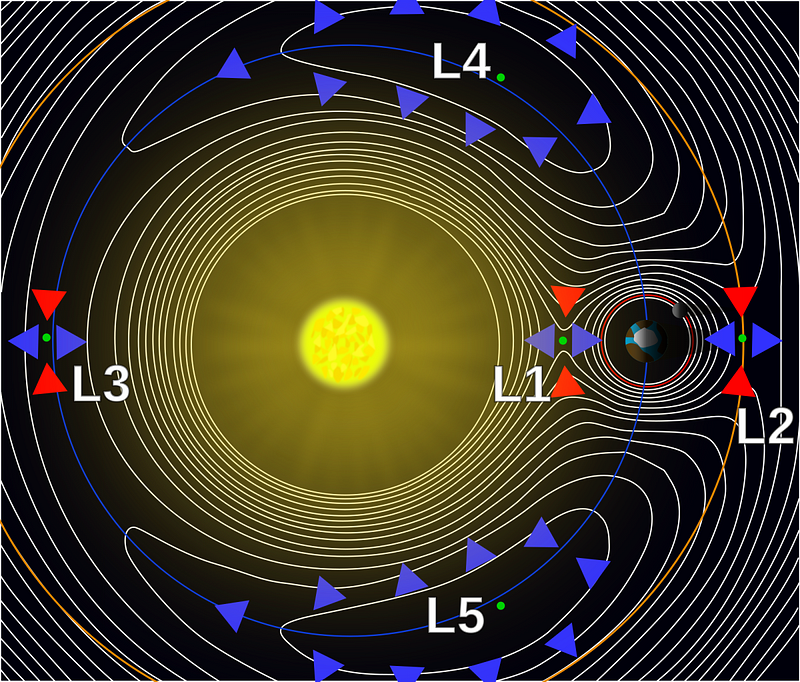
If you drew an equilateral triangle around the Sun with the orbit any planet — like Earth, for example — at one of the vertices, the other two vertices would be known as quasi-stable points, or the Lagrange points L4 and L5. They’re not exactly bound to the Earth, nor are they completely stable in their orbits they way the Moon is around our world. But it will take many millions or even billions of years for a mass that made its way to that point, in a stable orbit around the Sun, to get kicked out by gravitational perturbations from the other masses in the Solar System. It isn’t just those exact points, either; masses that orbit the Sun near those L4 and L5 points remain in quasi-stable orbits, either leading or trailing the main planet’s orbit (or vacillating between the two) for incredibly long periods of time.
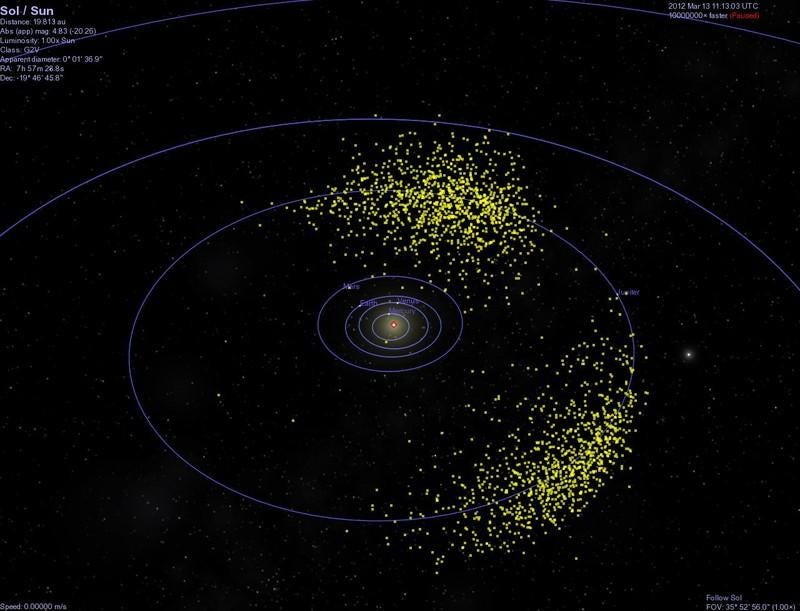
Jupiter was first discovered to have these classes of objects, known collectively as Trojan asteroids. (Originally, the ones around L4 and L5 were treated separately, with one group called Greeks and the other Trojans as a throwback to the warring factions in the Iliad ; for once in history, at least as far as naming conventions go, the Trojans came out ahead.) But not only are all the gas giants known to have them now, but Mars was discovered to have a handful as well. These asteroids can be incredibly tiny, and there are likely a whole slew around all the bodies in the Solar System that are simply too small to detect with conventional telescopes. They’re not true moons, since they’re only quasi-stable, with most getting kicked out of these orbital configurations on timescales of thousands of years. (Although some will last for millions of years!)
So now we come to Earth. Do we have any Trojan asteroids that co-orbit with us, around the Sun? It may come as a surprise to most of you, but Asteroid 2016 HO3 isn’t even the first “second moon” known to exist around Earth’s vicinity!
https://www.youtube.com/watch?v=lRaqYClJ154
That honor goes to the asteroid 3753 Cruithne, which was discovered way back in 1986, and also orbits the Sun in the vicinity of Earth. Like most of the Trojan asteroids, it appears to make a bean-shaped path as seen from Earth, but with a nearly 365 day orbit as well, its position can reliably be predicted a long way into the future. As far as we can tell, this asteroid will be a stable, quasi-satellite of Earth for thousands of years to come.
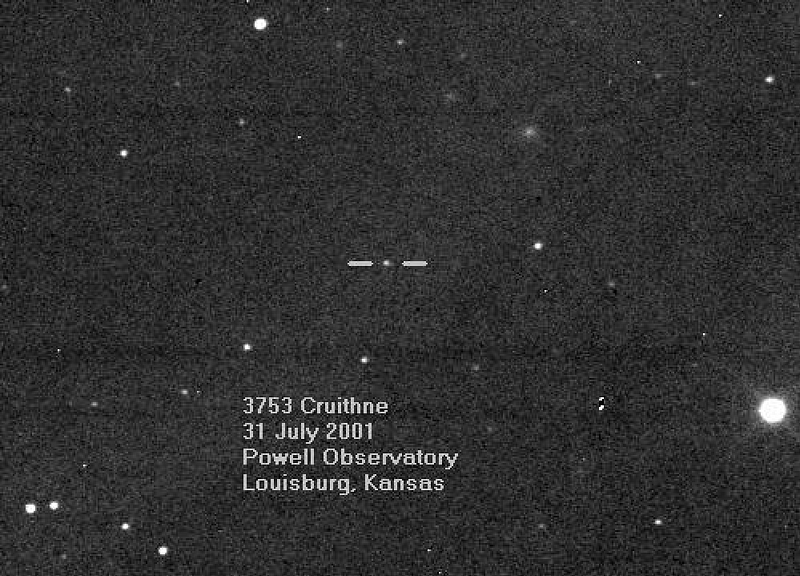
As all-sky surveys have gotten more and more powerful, smaller and smaller objects can be resolved at great distances from Earth. In 2006, the Catalina sky survey discovered another small quasi-satellite of Earth: 2006 RH120. In 2010, a third object in this class, (419624) 2010 SO16, was discovered byNASA’s Wide-field Infrared Survey Explorer (WISE) mission. And so the hoopla surrounding this latest asteroid — Asteroid 2016 HO3 — is very much unwarranted. Sure, it’s the newest one, discovered just this past April by the Pan-STARRS 1 asteroid survey telescope on Haleakala, Hawaii, but it’s still just an asteroid: no larger than 100 meters across. The only thing that makes it remarkable, and different from the other quasi-satellites, is that it’s not in a Trojan-like orbit, going around the Sun and coincident with Earth, but rather is directly bound to Earth like the Moon is!
Still, it’s in a quite elliptical orbit, it’s over a thousand times more tenuously bound than the Moon is, and it’s likely to be ejected by gravitational encounters within centuries or millennia, not millions of years. In fact, there used to be another asteroid in this same style of orbit — Earth-orbiting — known as 2003 YN107, but it went back to being in a horseshoe orbit in 2006. In a few centuries at most, so will this new asteroid. So if you want your moons to last, none of these objects are going to cut it. They call them “astronomical timescales” for a reason, and if you can measure what they do in mere human lifetimes, they’re a long way from being in the same category as a true moon!
Send in your questions and suggestions for Ask Ethan to startswithabang at gmail dot com.
This post first appeared at Forbes, and is brought to you ad-free by our Patreon supporters. Comment on our forum, & buy our first book: Beyond The Galaxy!





